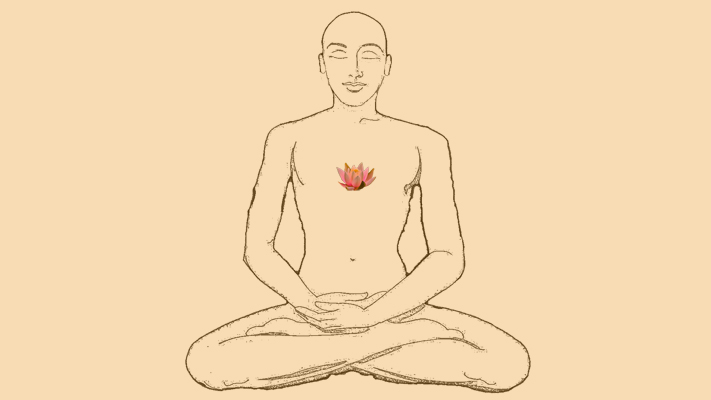Tibetan meditation originates from Tibetan Buddhism. It became popularized by world-renowned Tibetan Buddhists such as the Dalai Lama and Thich Nhat Hanh.
Tibetan meditation focuses on the practice of “Ihag Thong.” “Ihang” means higher or superior and “thong” means view, wisdom, or vision. Therefore, it aims at achieving superior wisdom or a great perspective. The ultimate goal of Tibetan meditation is to achieve enlightenment.
The Tibetan meditation philosophy emphasizes establishing a daily meditation practice and integrating mindfulness into daily life. It aims at cultivating mindfulness, concentration, and insight. It employs different techniques, including chanting, visualization, and breathing exercises. Tibetan meditation is often practiced along with other Buddhist practices, such as prayer, prostrations, and studying Buddhist scriptures.
To learn Tibetan meditation requires an open mind. Although you can practice the techniques on your own, it is best to learn under the guidance of a Tibetan spiritual teacher.
How to Practice Tibetan Meditation
There are different forms of Tibetan Meditation. They can be broadly categorized as “chogom” and “chaygom.” “Chogom” meditations aim to bring the mind into stillness while “chaygom” meditations explore Buddhist spiritual principles like selflessness and impermanence.
Below is an overview of several different types of Tibetan meditation and how to practice them.
Om Mani Padme Hum
This is a mantra meditation that helps you calm and clear the mind. It involves chanting the words om mani padme hum, which translates simply to “the jewel is in the lotus.”
If you break down each word further, this mantra is rich with meaning and embodies intentions such as dissolving attachments and judgements, cultivating innate wisdom, and connecting to all of creation. It is believed that doing this meditation regularly improves your happiness and health.
The meditation can be practiced lying down, sitting, standing, or walking. Whichever position you prefer, assume an upright body posture to promote alertness and proper energy flow.
Take a few deep breaths to relax your body and focus your mind. Repeat the mantra om mani padme hum silently as you practice belly breathing.
Inhale through the nose down into your abdomen, filling the belly. Exhale out through your nose letting the belly relax. Continue to focus on your intention and the meaning of the words.
Shamatha
Shamatha meditation involves focusing your mind on a single object with undivided attention. The Buddhist term “shamatha” translates to “calm mind” or “tranquility of mind.” Therefore, this practice aims to quiet and concentrate the mind to cultivate calmness.
Traditionally, your sitting posture is the foundation of shamatha meditation. The meditation should be practiced in the seven-point lotus posture as depicted in the seated Buddha statues. According to lionsroar.com, the seven points are:
- Sit cross-legged. Hands in lap or on knees.
- Have a straight back.
- Widen the shoulders to open the heart center.
- Lower the chin.
- Open mouth slightly with the tongue resting on the roof of the mouth.
- Eyes open, gazing about four finger widths past the tip of nose.”
You then focus on your breathing, paying attention to the nostrils as the air flows in and out. Since most people cannot sit comfortably in the lotus position, sitting upright in a cross-legged position is allowed.
Shamatha is a seemingly easy practice. However, practitioners soon encounter their wandering mind and realize how difficult it can be to focus on their breath.
It takes practice to concentrate and still the mind, but this practice has many psychological and emotional benefits over time including inner peace, feelings of serenity, and resilience.
Vipassana
Vipassana meditation has gained popularity, with retreat centers popping up all over the world. Typically, participants embark on a 10-day course practicing the Vipassana technique for at least 10 hours daily. They commit to noble silence for 10 days.
Vipassana is an ancient mindfulness practice aimed at gaining insight into reality. It involves observing the breath, thoughts, emotions, and sensations while remaining equanimous — without judgment or attachment to what you experience.
Ultimately, the practice cultivates an understanding of impermanence, the ever-changing nature of reality. By accepting impermanence, you learn to let go of worries and find a deep sense of peace and tranquility.
Metta
Metta is a loving-kindness meditation aimed at cultivating love, compassion, and goodwill toward oneself and others. It is practiced by focusing on generating emotions of love and kindness that you channel to yourself and others. Metta meditation can be practiced on its own or integrated into other meditations.
To practice Metta, sit in a comfortable and relaxed position. Take a few deep breaths to calm your mind. Silently chant the following words:
- “May I be happy”
- “May I be Peaceful”
- “May I be safe”
- “May I live in peace”
- “May all beings be happy”
- “May all beings be Peaceful”
- “May all beings be safe”
- “May all beings live in peace”
Chod
Chod is an ancientTibetan meditation typically practiced with the help of a guide. It includes visualizations, ritual practices, and Tibetan spiritual chants aimed at developing courage, facing fears, and dissolving the attachments of the ego.
Rather than sitting in a meditation temple, the setting of this practice is somewhere that frightens you, such as a cemetery, so that you can face the fears that come up. Ultimately it serves to free you from fear and attachment.
Mahamudra Meditation
Mahamudra meditation is a contemplative meditation to cultivate awareness and calmness. It aims at understanding the mind and encourages you to rest in your mind’s essence.
According to Mahasiddhi, a teacher of Mahamudra meditation, truth is not achieved through intellect or action. Rather, it is achieved in non-action – by resting in full awareness of the mind.

Therefore, Mahamudra meditation is a path of no action. It explores the three characteristics of the mind: emptiness, clarity, and awareness.
To practice Mahamudra meditation, sit in a comfortable position on a meditation cushion or chair, with your body upright and alert but also relaxed. Settle down and take a moment to notice yourself sitting. Observe your breath for a few minutes to calm down the mind.
Relax into the present moment, allowing any thoughts, emotions, and perceptions to arise. Meet what comes up without judgment.
Do not label it as good or bad. Don’t try to change or improve it. Rest in a state of ease and openness as you experience the three characteristics of the mind.
Dzogchen Meditation
Dzogchen meditation is an advanced type of Tibetan meditation that explores the deepest, subtlest, and most foundational level of the mind. Buddhist monks and Bopno yogis have practiced it for over 1,200 years.
It incorporates various meditation techniques and yogic exercises to help one fully awaken from the illusions of life that cause suffering.
It applies advanced hypnotic-like exercises, such as visualizations and post-hypnotic suggestions, to help one experience advanced insights into the mind. Meditators focus on the nature of their mind and seek to achieve self-realization and enlightenment.
Since Dzogchen Meditation is considered an advanced meditation, it is typically taught by a qualified teacher to students with a solid foundation in Buddhist teachings and meditation. It can be done as a walking or sitting meditation or incorporated into daily life.
Conclusion
The different types of Tibetan meditation are powerful tools for cultivating mental calmness and inner peace. They employ different techniques including awareness, breathing exercises, mantras, and visualizations.
Although some Tibetan Buddhist meditations are easy to learn and do on your own, others are rooted in complex Buddhist teachings, rituals, and spirituality, requiring a qualified teacher’s guidance.

